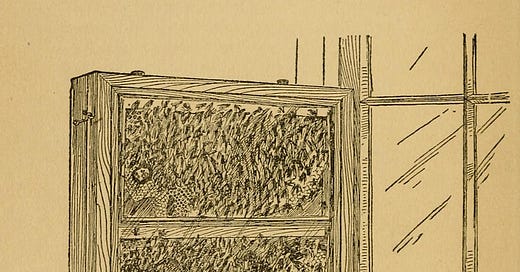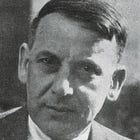Commentary on - Orage - "HOW NOT TO GIVE ONESELF AWAY"
Becoming transparent to oneself

As with all posts, a familiarity with basic fourth way texts is presumed. Please see Introduction and Further Bibliography for guidance, and for fuller details of works cited and of abbreviations.
Notwithstanding Orage's often jaunty style in these essays, with a little examination the outlines of a serious underlying and overarching purpose begin to be perceived, part of which is about knowing oneself. Orage is quite cunning in imparting something indirectly. Seemingly in this essay, and perhaps indeed part of its serious aim, it is about keeping one's inner state hidden from the outside, yet there also seems a lot more going on here.
Orage points out that our external bodily manifestations - postures, gestures, tone of voice, facial expression and so on - reflect our internal states, and implies that a trained observer, and even our friends, may know more about this than we ourselves do. The “trained observer,” however, is potentially oneself, observing oneself.1 Prior to this training, one is opaque to oneself, afterwards, transparent.
He says, “Let us learn first to see (and hear) ourselves as others see us, and afterwards it may be possible to learn how not to be seen.”2 He also reminds us that there are many situations where "the control of expression" is necessary for our own happiness and that of others.3 He suggests a few different ways of learning to become a "trained observer" of oneself, part of which is like the training of an actor,4 in order to be able to consciously play the role that is needed for every particular situation. One can compare what Orage said in one of his talks:
A conscious man—he will go through all the same exterior behavior as the businessman, for example, yet he will be undiscoverable. Yet he is not doing it as a businessman will—for money power etc.5
There is similar material broached in the second Psychological Essay, The Control of Temper, with both these essays speaking of the observing of the manifestations of inner emotional states in the body. How to Read Men also has obvious correlations, training oneself to become an observer of others, and in so doing, learning more of how to observe oneself. He says in this current essay, "since we exercise in general no real control over [the physical body], all its movements, postures and gestures are the natural manifestations of our inward psychic states."6 To become familiar with our "limited repertoire of expressions for all the states we experience,"7 as Orage advises, is largely directed to external "manners of behaviour," in contrast to observation of the inner state of the body being emphasised more in the second essay, The Control of Temper. That is, this essay seems to be mostly to do with noticing inner states and their expression by the body, not identifying with them, and being able to act, or manifest oneself, in a contrary manner.
However, one of the indirect aims of Orage (for our benefit) even seems to be not so much to veil our inner states from others, as helpful as that may often be, but to "deceive the Devil himself—in short, your own dark mood,"8 and transform it into something beneficent and conducive to growth.




